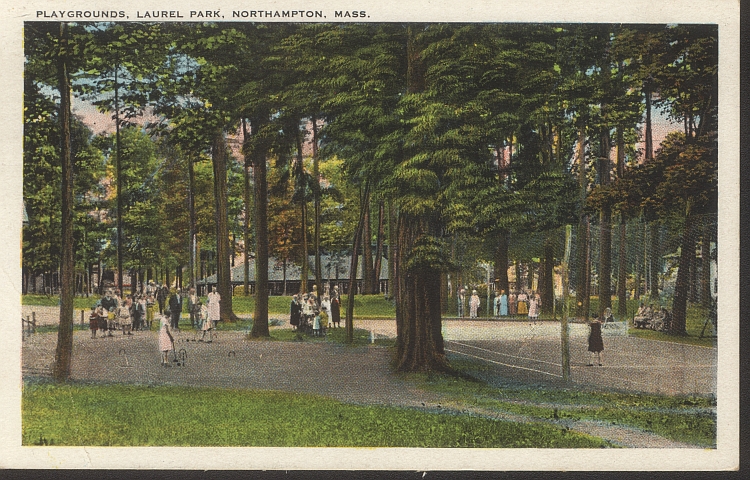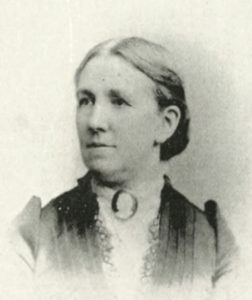
QUAKER MEETING
IT WAS AS IF my late grandfather were sitting there next to me.
I was at a Quaker meeting in the outdoor tabernacle at Laurel Park on a bright, sunny, Sunday morning, amid a grove of tall, straight hemlocks. Their thick, evergreen canopy overshadows the roof of the tabernacle, a covered outdoor theater, music, and ceremonial space where a group of about 20 of us sat in silence.
The meeting was the first of the 2017 Interfaith Spiritual Program organized by Laurel Park Arts, a nonprofit charged with upholding a tradition of education and arts programming that began nearly 150 years ago.
The site off Route 5 in Northampton, Massachusetts, now known as Laurel Park was founded in 1872 as a Methodist summer camp and used as a site for religious camp meetings and other spiritual services.
The grounds were developed with the Chautauqua movement in mind. The movement flourished in the United States in the late 19th and early 20th centuries. Modeled after activities at the Chautauqua Institution of western New York, places around the country like the one at Laurel Park combined education with entertainment in lectures, concerts, and plays.
In the late 1960s, Laurel Park’s approximately 100 homeowners began winterizing their cottages as affordable year-round homes. The park became secular in the mid-1980s, but its religious and spiritual tradition is maintained through its annual Interfaith Spiritual Program.
***
I HAVE LIVED less than three miles away from Laurel Park for nearly 20 years, but Sunday’s service was the first time I went to an event there. The large “Laurel Park” sign overlooking the park’s entrance always intrigued me as I drove past, but I mistakenly assumed that the park’s activities and events were not open to the general public.
I attended the Quaker service mostly out of curiosity.
I knew that much (and sometimes all), of the Quaker service is spent in silent meditation, and that appealed to me, too. In my experience, good things often rise to the surface when they are no longer blocked by the noise of daily life: ideas, memories, and on rare occasions, revelations come to light. Silence, as Thomas Carlyle said, is golden.
My interest was also piqued because I have a number of Quaker ancestors, including my great-grandfather, George Powell, and his two older siblings, Aaron and Elizabeth. In recent years, I have come to see myself as their spiritual heir.
I have only known their history for a few years, but the similarities are uncanny. Like me, all three authored books during their lifetimes. George even wrote a slim volume about apples (The Apple: The King of Fruits); my books include America’s Apple and Apples of New England.
Like George, who owned an apple orchard in Ghent, New York, I have spent much of my career promoting apples and agriculture. Aaron devoted much of his early life to the cause of abolition; I published My Interview with James Baldwin, a contemporary look at the racial divide in America through the eyes of one of its great writers.

Elizabeth Powell Bond
But it was the middle sister — my great-great aunt Elizabeth Powell Bond — with whom I have discovered the greatest affinity. She was on the faculty of Vassar College in 1866, the first year it admitted students; my first job in public relations was at another innovative institution, Hampshire College, in 1982 when it was just 12 years old.
Elizabeth taught athletics at Vassar — gymnastics, a relatively new subject for women. I coached cross country and indoor track at Amherst, Mount Holyoke, and Elms colleges for more than a decade.
Before she began her career in higher education (eventually becoming dean of Swarthmore College), Elizabeth edited the weekly newspaper, the Northampton Journal. I published New England Watershed Magazine from nearby Hatfield more than a century later.
Elizabeth was an avid gardener, as am I. The Dean Bond Rose Garden at Swarthmore is named in her honor. I wrote about my gardening experiences in last year’s Living Without Lawn.
I learned just years ago that she is buried in Florence, just a few miles away from my Hatfield home.
Unlike me, Elizabeth and her brothers were devout Quakers. In addition to her long association with Swarthmore, founded as a Quaker institution, she authored two volumes titled Words By the Way, a compendium of lectures and sermons on philosophy and religion she gave to her students. After the Civil War, Aaron turned his attention from abolition to the cause of women’s suffrage. George, in addition to running his orchard, was one of the founders and a president of the Horticultural Society of New York. The three each lived according to their values.
***
I KNEW LITTLE of this family history growing up. My ideas about the Quaker faith were unspoken, communicated not by word but by deed in the person of my grandfather, Alger Powell.
Alger did not attend Quaker meetings or identify himself as a Quaker. But each year without fanfare, using hand tools he would chop, cut, split, and stack a tree over the course of summer and fall to ensure that we had an adequate supply of wood in our cellar for our two fireplaces every winter.
Only minutes into the silence at Sunday’s service, a powerful and persistent image of my elderly grandfather emerged, methodically sawing a log on a simple metal sawhorse on a hot summer day like this one, bald, wearing rimless glasses, shirtless (rare for this quiet, private man), the bow saw moving back and forth rhythmically below the barn by our house.
This became my notion of Quakerism: not just worshipping on Sundays, but living every day according to one’s beliefs, quietly, humbly, with devotion; investing in the world in every activity, not for recognition but for its intrinsic value.
The image of my grandfather leaning over his saw stayed with me for the duration of Sunday’s service, even after several people got up to speak.
As the silence resumed, my thoughts turned to mortality and the mystery of death, as they often do. My grandfather died in 1970 at age 86, when I was a teenager. Yet here he was nearly half a century later, appearing life-like to me on a quiet bench in Northampton, as vivid and real as if I could reach out and touch him.
My grandfather still lives, within me, and will as long as I (and others) remember him.
***
THIS COMING SUNDAY service (July 23) will be the opposite of the quiet Quakers: Kirtan, a Hindu devotional song in which lines are sung by a leader and repeated by the group. I lack a personal connection to Kirtan, but I am as curious as I was about the Quakers. Perhaps the experience will provoke powerful thoughts or memories of a different kind.
Laurel Park’s 2017 Interfaith Series has two more events scheduled after this: a Lammas Celebration, an ancient pagan harvest festival that has it origins in England, on August 6; and First Churches of Northampton (UCC), which will continue a longstanding tradition of closing out the Laurel Park Interfaith series on August 20.
Services begin at 10 a.m. in the tabernacle, a simple, open-air structure that seats up to 200 on long wooden benches. The space is unadorned except for the majesty of the surrounding trees and historic buildings, plus a pair of stained-glass “windows” depicting natural scenes on either side of the stage, and an arching sculpture of crossing bamboo shoots by 2016 artist-in-residence Gary Orlinsky above it. Seat cushions and bug spray are provided for those who need them.
 This is a summer of retooling for Laurel Park Arts, the group charged with developing programming for the homeowners and general public, as it seeks new ways to fulfill its historic mission and broaden its appeal to the community. I have recently joined the board to contribute my energy and ideas.
This is a summer of retooling for Laurel Park Arts, the group charged with developing programming for the homeowners and general public, as it seeks new ways to fulfill its historic mission and broaden its appeal to the community. I have recently joined the board to contribute my energy and ideas.
As we consider the possibilities next year and beyond, there is one more event planned for this fall, completing 145 years of continuous programming at the historic site: “Chautauqua 2017: A Celebration of Trees!” Sunday, October 15.
We are still putting together the program, so appropriate for this lovely, forested setting (in addition to the evergreens surrounding the tabernacle, the park features nine acres of woodland trails). Bar Lois Weeks and I will give a presentation on apples during the celebration, and the board is reaching out to horticulturalists, arborists, and other tree lovers with expertise on some aspect of the multiple, critical roles trees play in our lives.
If you know people who would be good speakers or if there are topics of particular interest, now is the time to pass them along. Feel free to write to me with your ideas.

What a very special account this is, Russ! Fascinating to read. Thank you,
Leslie
Thank you, Leslie. I am glad you liked it. This was my first essay in some time, and I never know. I appreciate the kind words and feedback.
Russell,
Have you read THE HIDDEN LIFE OF TREES? It is written by a German forester and is a charming account of how trees live together and how they help each other out in the course of their long lives. I highly recommend it.
Damaris
Funny you should mention it. I was just speaking about the book with friends yesterday. I have a copy, but have only just begun. I have heard other great comments like yours. I am looking forward to it! Thanks for the recommendation.